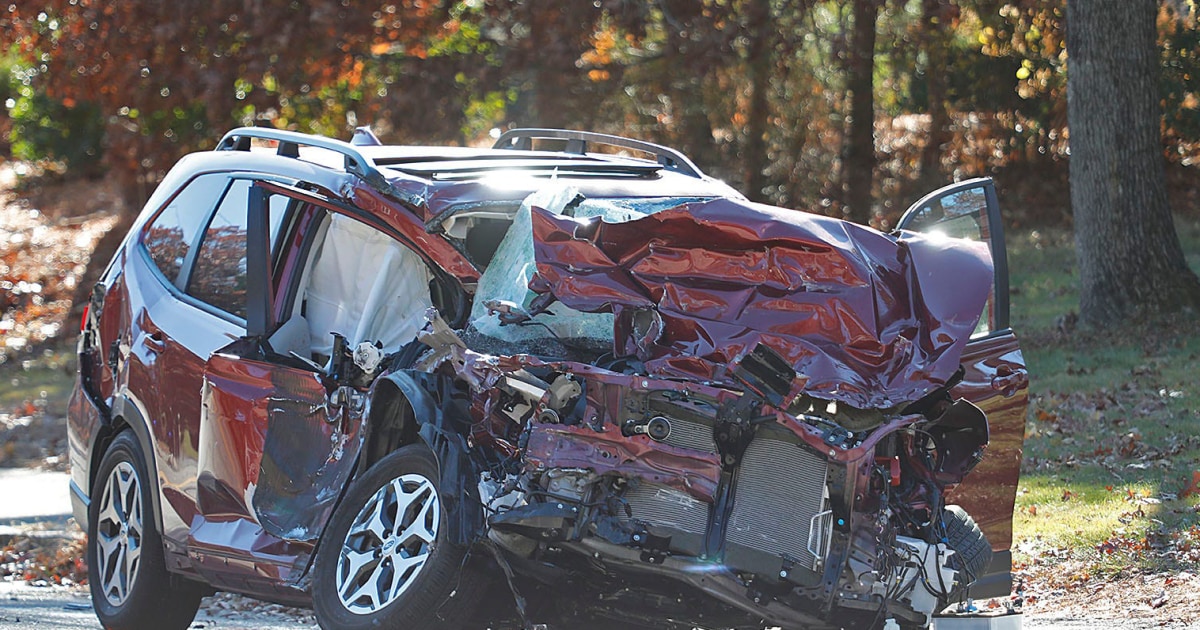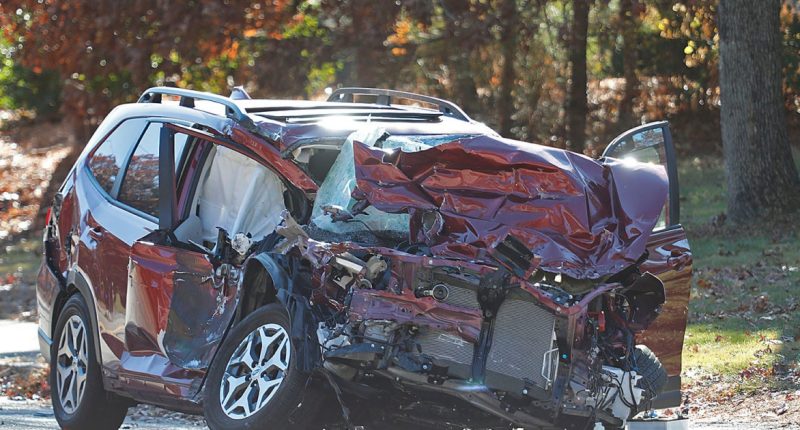
Automakers often display a warning in commercials when showing a car executing incredible stunts: “Professional driver on a closed course. Please do not attempt.”
But with deaths from car crashes rising every year, experts are asking if that kind of boilerplate language, which more or less fades into the background as a vehicle burns rubber on the screen, goes far enough.
Last month, the National Transportation Safety Board called for a study of car advertisements, saying the Insurance Institute of Highway Safety (IIHS) should try to determine if there is a link between commercials that show unsafe driver behavior and real-world speeding or reckless driving.
“Nearly one-third of our roadway deaths are speeding related, and this sort of advertising is dangerous and contributes to a culture of speeding that costs lives,” said NTSB Chair Jennifer Homendy in a statement to NBC News. “Everyone — including vehicle manufacturers — shares in the responsibility for safety on our roads.”
If there is such a link, it’s going to be hard to prove, according to David Zuby, the chief research officer at IIHS. Still, Zuby said his group will work on ways to examine whether there could be a link between crashes and commercials that show dangerous driving.
“It probably doesn’t help driver behavior to have everyday cars being shown driven aggressively,” he told NBC.
The NTSB’s suggestion was one of a series of observations it made in a report about a January 2022 crash in Las Vegas that killed nine people.
Homendy and the NTSB is not suggesting that car commercials were solely responsible for that crash. As the agency’s report noted, driver Gary Dean Robinson was impaired by cocaine and PCP, and he had a history of speeding. At the time of the crash, he was driving more than 100 miles per hour on a street where the speed limit was 35. He hit a Toyota Sienna carrying seven people in it, including four children. All seven died, as did Robinson and a passenger in his car.
The NTSB recommended a series of more concrete steps, including that regulators consider implementing “an intelligent speed assistance system (ISA) that electronically limits the speed of the vehicle,” and that states make it a priority to reduce repeat-offense speeding.
Meanwhile, experts have been revamping street designs and city plans to discourage dangerous driving and make the road safer for pedestrians and bicyclists.
Col. Matt Langer of the Minnesota State Patrol said drivers started taking more risks at the height of the pandemic, when roads were relatively empty. The number of drivers on the road has returned to normal, but the manner in which people are driving hasn’t improved.
“The roads today are more dangerous than they were five years ago, and some of the progress that we’d made in the U.S. related to traffic safety have been erased,” he said.
Langer, who is also the chair of the roadway safety committee for the International Association of Chiefs of Police, said that speeding makes other problems, like impairment or not using seatbelts, even worse.
“We’ve got this huge problem all across the country and all across the world with speeding motorists. It’s creating all kinds of other problems,” he said.
So the idea of addressing car advertising is only one suggestion. But what’s clear is that the report comes at a time of growing concerns about how drivers are behaving.
The National Highway Traffic Safety Administration, which is part of the Department of Transportation and is distinct from the independent NTSB, says that deaths in car crashes increased 27% from 2012 to 2021, the most recent year for which it has reported data.
“It’s becoming increasingly accepted that contributing factors to the increase in road deaths over the last decade or so is largely due to bad driver behavior, or risk-taking behavior,” said Zuby.
But even if there is no link between commercials and risky driving, he suggests that car companies are making choices that make driving more dangerous.
“The horsepower of all vehicles has gone up dramatically over the last 20, 30 years,” said Zuby, who said he’s been working on highway safety since 1986. He noted that automakers have been competing to outdo each other in recent years, with the engines in some Dodge Charger variants for example offering nearly 1,000 horsepower.
“What’s the point of selling a 1,000-horsepower car to people who are going to drive it on the road?” he asked.
Crashes involving pedestrians are killing more people as well. Zuby said that’s connected to growing sales of large, tall SUVs and to some cities encouraging more people to bike and walk, creating more pedestrian traffic.
The IIHS is best known for crash tests and for evaluating safety claims made by automakers, but Zuby says the group is starting to consider more drastic steps.
“We’ve never un-recommended a vehicle because we think it’s got an irresponsibly powerful engine, but that is the kind of thing we’re talking about with deaths on the rise, and the contribution of speeding seems to be an important part of that rise,” he said.
Source: | This article originally belongs to Nbcnews.com









